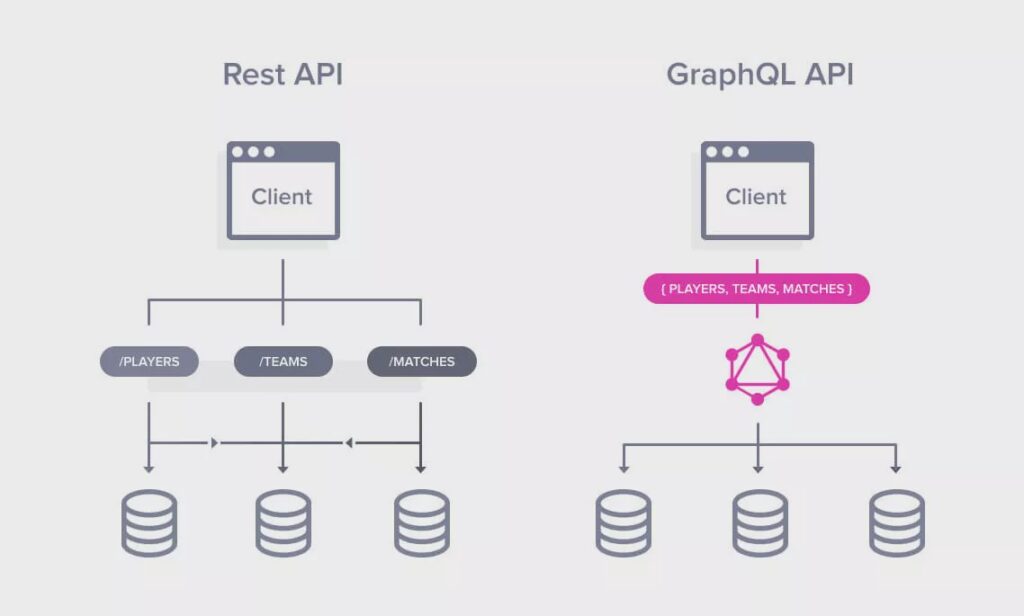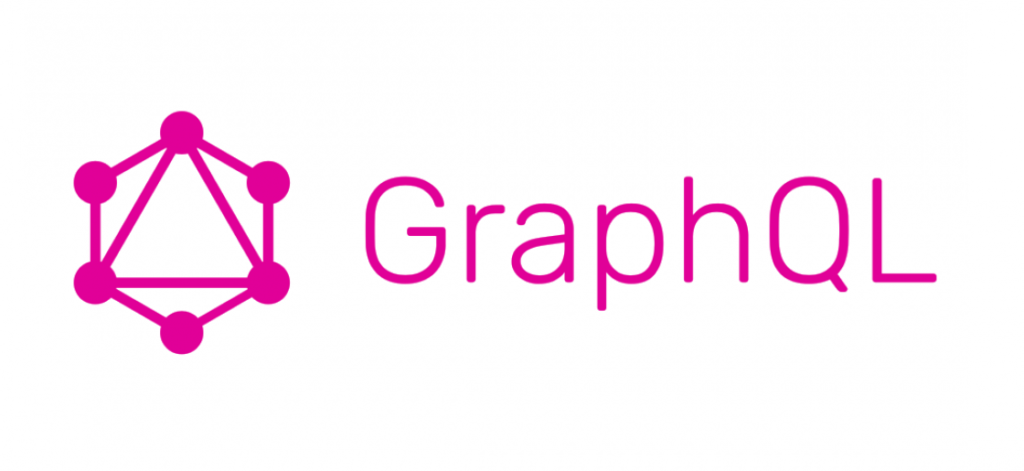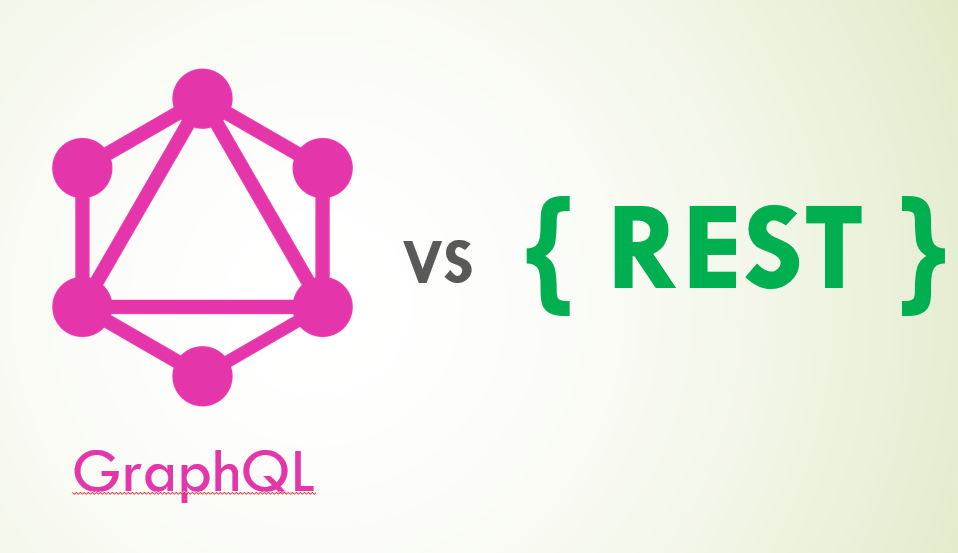GraphQL Vs REST API: If you are looking to design and develop your web service, you can choose which will be used your application is most important things. In API design, REST has been extensively used in last few years. In 2015, Facebook released GraphQL for API which will be popular query language and an alternative option to REST.

Both of GraphQL and REST technology have different approach of working where users need to carry out specific communication type depending on the server architecture.
What is an API?
An API means Application Programming Interface. It has a set functions and protocols that permits app to access data from external software components, operating system or micro services. Simply explain this API is used user send the response of system and deliver the system response back to the users. Let’s discuss the difference of both GraphQL API and REST API and to find out which is best for your project requirements.
What is a GraphQL API?
Graphqql is a query language and server-side runtime for API that give the important for clients exactly the data they have request and no more. This GraphQL is designed to build APIs fast, flexible and developer-friendly. This GraphQL works across specific endpoints making use of the HTTP protocols.

What is a REST API?
REST means Representation State Transfer and it represent the style of software. This REST architecture having a group of restriction implemented to provide robust web services. The standard API is REST which was introduced by Roy Fielding in the year 2000. REST APIs generally support for many formats of data like HTML, XML, plain text, JSON, and many other formats.
The main difference between GraphQL Vs REST API:
GraphQL and REST are two API design approaches that fulfill the same function to the data transmission via internet protocols such as HTTP. But, how they do our work is significantly varied. GraphQL is a query language and REST is an architectural pattern.
The following key factors are used to evaluate these technology,
- Usability
- Popularity
- Security
- Performance
1.Usability of GraphQL API Vs REST API
These two GraphQL and REST are completely different beasts, especially in terms of predictability and versioning.
Predictability: One of the strongest GraphQL appeals is its high predictability of this technology. It allow you to send a request to your API and get you require exact result – without needless inclusions.
On the diverse, REST usually having a various dealing based on the URI and HTTP method used. This is an unclear format for an API customer to know what to expect when calling a new endpoints.
Versioning: REST have standardized and lack clear guidelines for versioning. This facility of this technology implies that every provider is free to implement their own approach. In fact, REST builder, roy fielding, believes that APIs should not be versioned – something that the REST community has been going against of API.
On the other hand of GraphQL follows a straightforward and clear approach to versioning, do not version APIs and period.
If the compression of GraphQL API Vs REST API in terms of predictability and versioning. GraphQL is simplicity and significantly adds to its usability. Then compared to REST needless effort to integrate remote service queries.
Contrarily, REST’s great flexibility is a neutral feature, which may impact usability either positively or negatively based on client preferred API design technique.
2.Popularity of GraphQL API and REST API
The most popular open-source technology have been community-tested and are likely to be stable and mature. Also, adapting a widely famous technology can help you leverage community support if you experience any problems during implementation.
The latter is clearly ahead, when it comes to GraphQL vs REST popularity. The former is a new kid in the block trying to catch up with an already established API design.
For example, state of 2020 API report, 82% of the surveyed API practitioners and customers use the REST-based API, while only 19% use GraphQL.
In spite of that, GraphQL’s popularity is proliferating. The state of Javascript report in 2019, while only 5% of the surveyed developers had used it in 2016, 38.7% used it in 2019.
3.Security of GraphQL and REST
GraphQL and REST security is the credit seems to be learning towards the latter’s side. REST provides multiple inherent ways to enforce the security of your APIs. For example, you can make sure REST API security by implementing various authentication methods like HTTP authentication, etc.
While GraphQL also provides some measure to make sure your APIs security, they are not as mature as those of REST. For example, GraphQL helps in integrating data validation, customer are left on their own to apply authentication and authorization measures on top.
4.Performance
The performance of proclivity for under-fetching and over-fetching is another point of criticism against RESTful services. When an endpoint delivers more data is necessary is happens in over-fetching. Otherwise the under-fetching indicates that an endpoint cannot return a significant amount of data.
REST API inherently have solid data structure designed to return the stipulated data whenever they get hit, you may get needless data or be forced to build multiple calls before getting the relevant data.
In GraphQL rather than using fixed server-defined endpoints, uses a flexible style that allow you to retrieve what in a single API request.
GraphQL and REST difference:
| GraphQL API | REST API |
| A query language to provide flexibility and efficiency to solve all common problem to integrating APIs. | An architectural style largely viewed as a regular standard for designing APIs |
| Client-driven architecture is used | Server-driven architecture is used |
| No API versioning | Multiple API versions are support |
| Shortage of automatic caching mechanism | Uses caching automatically |
| Complicates handling of HTTP status codes to identify errors | Uses HTTP status codes to identify errors easily. |
GraphQL Vs REST pros and cons
GraphQL pros:
Suitable for avoiding over-fetching and under-fetching of data.
Suitable for parallel API development for both back end and front end.
GraphQL cons:
Scarcity of extensive adoption and support
Scarcity of built-in caching capabilities.
REST pros:
Handle different types of calls and supports different data formats, including HTML, plain text, and JSON.
Decoupling of server and client architectures provides great scalability.
REST cons:
Several round trips of requests required fetch all the data necessary. No specific, and standardized method of structuring REST APIs.
